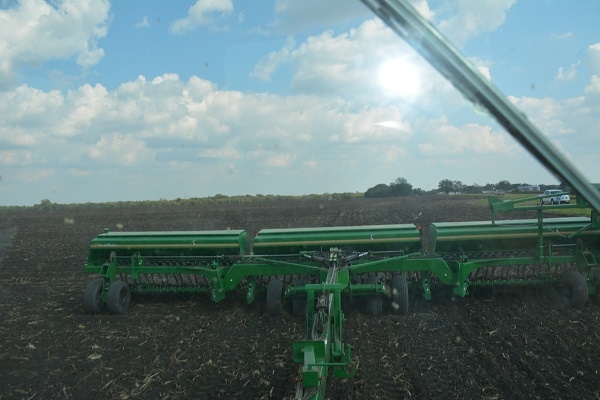January 9, 2015

The US economy enters 2015 propelled by moderate growth across the country. A year ago, while the U.S. economy was improving, most Americans continued to feel frustration for at least two key reasons: relatively high unemployment and uncertainty. With unemployment falling from 7 percent to about 5.8 percent during 2014, the economy is alleviating some of the public tension. While there continues to be much uncertainty, the unemployment rate has dropped to the national average from 1948-2014 for the first time since pre-recession. There are now signs that this will translate into wage and benefit increases, especially for skilled labor. Because most farms get most of their family income from off-farm employment, this is especially good news for the agricultural sector.
The US economy continues record growth, especially with consumer spending back on track, the agricultural sector at or near record levels, and the stock market breaking records. With the U.S. competitive position strengthening and buoyed by domestic energy markets, growth is expected to continue in 2015. Business investment, slow to recover, is returning. While the recovery might have been faster with stronger government spending, there is political support for the downward trend in government spending.
For the latest on southwest agriculture, please check out Southwest Farm Press Daily and receive the latest news right to your inbox.
The growth in lower-wage occupations may begin to be seen in mid-range jobs, exerting upward wage pressure. This could return uncertain Americans to home-buying and longer term investments. However, the Federal Reserve has ended monetary easing and is poised to begin raising interest rates if inflation returns. Political uncertainty in Washington and state houses continues. While global markets are generally positive, there are reasons to be cautious about expectations. With monetary and fiscal policy now moving in the same direction of contraction, this could dampen market forecasts.
The Oklahoma-Texas regional economies continue to grow. Most sectors of both regions are in modest to moderate shape, although lower crop prices and higher cattle prices are sending mixed signals for farm income. Increased wage pressure and tight labor markets will challenge some sectors, but likely will fuel consumer spending and in-migration of skilled labor. Unemployment will continue to decline slowly. U.S agricultural trade will moderate somewhat, but remain relatively positive.
Anticipate businesses that depend on energy as a key input to reconsider foreign investment and expansion, choosing instead to invest in domestic growth. Too, foreign industry will take another look at the U.S. because of relatively cheap and plentiful energy. A regional challenge with the energy industry will be how lower prices impact the area. It is likely to mean reduced state revenues, and some job losses. However, analysts think this will be a temporary downturn.
Wildcards that drive uncertainty include Washington politics and foreign turmoil with the Mideast and the African Ebola epidemic. Also, the rate of moderation in China’s growth and the potential for slowdown in Japan and Europe need to be closely watched. As with past times of uncertainty, risk management remains a vital aspect of financial management.
You May Also Like




